![]() Ubuntu 10.10, aka Maverick Meerkat, is the latest stable release of the Debian-based Linux distribution. This is the second and the last release for the year. As is customary for Ubuntu, three editions were released: The Desktop, Netbook, and Server editions. This article offers a detailed review of the desktop edition.
Ubuntu 10.10, aka Maverick Meerkat, is the latest stable release of the Debian-based Linux distribution. This is the second and the last release for the year. As is customary for Ubuntu, three editions were released: The Desktop, Netbook, and Server editions. This article offers a detailed review of the desktop edition.
And as is the custom on this website, we begin by looking at the installation program and process.
Installation: On the surface, the installation program on Ubuntu 10.10 looks more advanced than the one in the last stable release. In reality, however, they are the same. The difference is mostly cosmetic. One cosmetic change you will observe when running the installer is shown in the screenshot below. It is a check list of sorts. The first and last item on that list make sense, but the second does not. “… Ensure that this computer is plugged into a power source.” Really! How else could I be reading that installation check list if my computer is not plugged into a power source? I want to believe that there is something about that second item that I missed. If you know what it is, please drop a comment.

Is your computer on
The installer still lacks support for LVM, RAID, and full disk encryption. The only encryption feature it has is home folder encryption, which just encrypts a user’s home folder if the “Encrypt my home folder” option is checked. Keep in mind that this option does not offer partition-level encryption. For example, if you create a separate partition for /home and you check “Encrypt my home folder,” your home folder will be encrypted, but the partition will not.

Encryption option
If you chose to encrypt your home folder, you will see the message shown in the image below the first time you log in. Note that this folder-level encryption does not offer the same level of physical security as full disk encryption. If you need to install Ubuntu 10.10 on an encrypted disk, you will have to use the Alternate installation image.

Encryption passphrase
As on virtually all current Linux distributions, the default journaling file system is ext4. Others supported are ext3, jfs, reiserfs, and xfs. Ubuntu 10.10 is the first stable version of the Ubuntu desktop to offer support for btrfs, the B-Tree file System. You might want to read how to install Ubuntu on a btrfs file system. The boot loader is GRUB 2 (version 1.98).
A very cool, new feature (this one is not cosmetic) of the Ubuntu installer is the “multi-tasking” feature, which makes it possible to perform other installation tasks while the installer is copying files. At the installation step shown in the image below, for example, you can click on the Forward button to move to the next task, while files are still being copied.
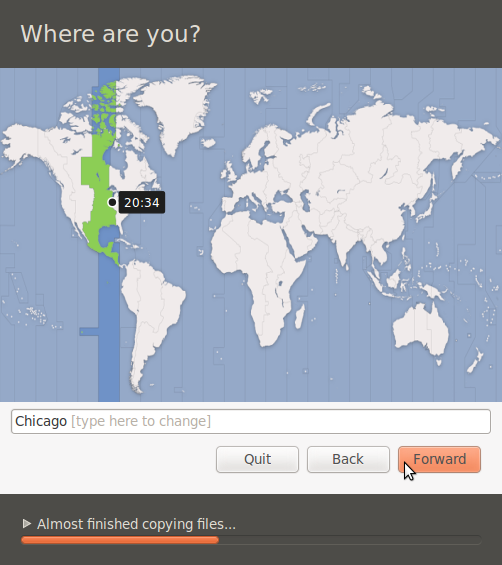
Choose timezone
And if the installer has finished copying files before you complete the other tasks, it will patiently wait for you. In the beta edition, “Log in automatically” was enabled by default. However, in this stable release, “Require my password to log in,” which is the right option, is enabled.
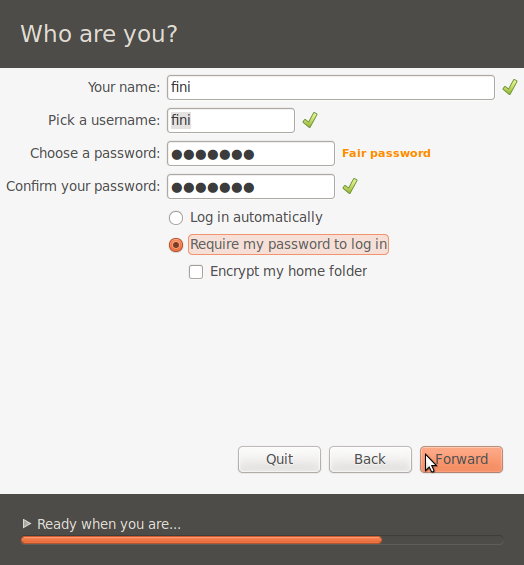
User account

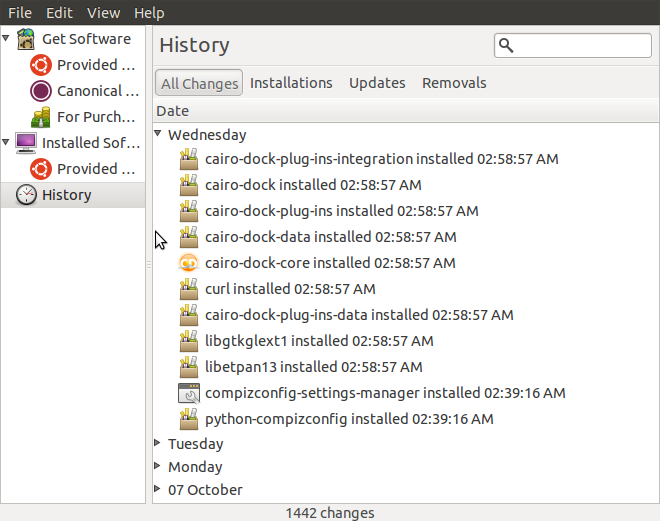
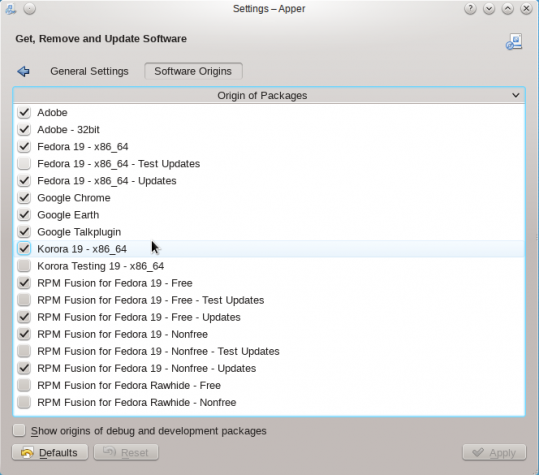

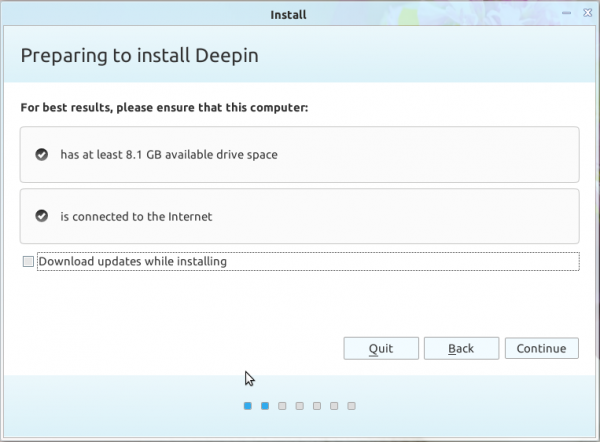



Tried to edit my message above on the HTC HD2 smartphone … which rund Windows 6.5, Windows7, Android 2.2, but crashes on Ubuntu. The Unbuntu still is in alpha production.
Regarding your comments about the encrypted LVM, RAID and whole partion encryption; you can do those if you use the “Alternate Install” CD. While it would be nice if the options were on the regular CD, it would confuse a lot of people who don’t know what those are.
As far as why they encrypt individual user directories instead of the entire /home; I think the intent is individual security. If you encrypt /home, then all users are encrypted with the same key. So, if a single user wants to encrypt for privacy, you’d have the system encrypting twice, once for /home, then again for /home/user. You can encrypt /home (on a separate partition) using the “Alternate Install” CD.
In my opinion, the current options are a reasonable compromise.
I agree with some of your points, but the idea that having LVM, RAID, and disk encryption on the regular CD will “confuse a lot of people who don’t know what those are” does not fly. That assumes a certain degree of mental laziness on the part of those users, which in itself is insulting to them.
When LVM was first introduced into Linux installers, it did not confuse us. Instead, we embraced it when we learnt what the benefits of using it are. I am sure that the users you are referring to, those who were introduced to Linux via the regular Ubuntu CD, will respond similarly if they were told what the benefits of LVM and disk encryption are. The installer just has to make it simple for those features to be configured, just like the Fedora installer has done. See how Anaconda, the Fedora installer makes it easy to configure disk encryption.
The note about plugging in your computer during installation is for laptop users. A battery dying during OS installation can result in hard disk partition table loss, erasure of data, and loss of the bootloader.
I was amazed somebody (the author) would not understand the meaning of second item. I have a 3-cell Acer Aspire one Netbook which lasts only about 2.5 hours on batteries running Ubuntu desktop. Depending on the Internet connection speed, it could take me much longer to upgrade. Of course I should make sure it is plugged to AC before starting!
Sometimes the mind hits a wall, even on the smallest things. It happens to the best of minds.
hi friends this is the best linux operating system after trying heavly with the fedora, madriva, slackware, and even sabayon .. fedora has an bad art work and development in the f13. even though madriva spring 2010 rocks its not equally matched with ubuntu 10.04 which has rock the world with its look and stable release and has many unique feature and is able to compete with windows 7 .. only draw back with the ubuntu 10.04 is it cant able to detect the 3g mobile for the net connection as i suffered the same problem using bsnl 3g …
i have been expecting lot from the ubuntu developers in the 10.10.. and pl dont change the mac themes guys it really rockz…..
After upgrading from 10.04 to 10.10, it brings my wireless and bluetooth down.
I am using HP mini 210.
I thinking to change this OS right now …
I am using lenova and my wireless and bluetooth are working fine. In fact all the drivers are installed automatically. Love you ubuntu! 🙂
ah come on guy dont change the ubuntu go for trying the properieatory software driver and updates .. other wise check for the ubuntu blue tooth and the wireless modem updates and install them
This has happened to me on the last few years worth of updates. The update tends to turn off the “Enable Wireless” softkey. On mine it is function-f2. Happens everytime.
The first time it happened I felt like an idiot for spending a few hours and nearly breaking my install trying to re-configure my wireless drivers, ha
how do i turn my wireless softkey on/ enable my wireless device
While some people like the dock, plenty don’t. If Ubuntu came with it preinstalled I’d have to wrestle with removing it first. As it is I already have to move my buttons to the right and the taskbar to the bottom of the screen.
So not everyone likes things being arranged in a Mac-like way and it’s better they don’t go too far in this direction. Probably where you have a point though is that they could make it easier to tweak the desktop as it requires following check lists and guides at present.
I agree. I much prefer a simple, clean desktop – and all my window buttons are on the right as well.
I don’t object to Ubuntu wanting to ape the Mac’s look and feel… just as long as I can easily change things back to suit me.
Agree … don’t follow OS-X. I have my task bars, if Linux (with GREAT trouble) on the LEFT – leaving my scroll bars available. M$ Windows makes it much easier to place my task bars on any side(s) of the screen, but not Linux.
What surprises me is that hard-core *ix users don’t know that most computers now use 9:4 (nor 4:3) screen. Also, that most people like long vertical column text, not long, long lines of text … look at most hard copy productions (post-grad dissertations excepted).
Hard-core COMMAND-LINE dinosoars seem to not know about GUI & the mouse. Keep that silly terminal/ dos-box away. It stops serious productivity for most people.
Virtual box testing is very superficial. Ubuntu software center is a mess … everything not in a few limited categories is slammed into last category “System” … games etc.
Synaptic has the same untidy mess … games put in nearly every category. Dev, dummy, backports, Python* stuff every place. Not sure why I need to know that – I’m not a code hacker.
Simpletons around me wwantt to be free of M$ crashes & malware … so I Ubuntu them. But can anything *ix run Dragon Naturally Speaking, Omnipage, Servant Salamander, etc.
I speak, read & write normal English. When will *ix not tell me that my directories “data” & “Data” are different? Linux tries to avoid_silly_coding_rubbish_onto_ordinary_users_…._most_times.
*ix … please_grow_UP_–ONE_DAY_!!
Retired (medical) IT Consultant
Australian Capital Territory
Case-sensitivity has nothing to do with proficiency in English.
The comment about plugging into a power source is for laptop users. Many people have lower-than-desirable battery life, and if you blend this with a slow internet connection and installing updates during installation, you get a half-installed system, which definitely isn’t a good thing if you’re a noob doing automatic partitioning between Ubuntu/Mac/Windows.
I find nothing unordinary about this.
As for all else, good review- it would be interesting if you’d taken a closer look at Ubuntu One and the Music Store.
You must use the alternate install cd, the server cd, or the DVD in order to use LVM and raid.
Type expert at the prompt and there you are. It’s ALWAYS been like this.
Ubuntu sucks. 99.95% of the time it doesnt even work.
LOL! Looks like we have a Windoz fan-boy on here! How’s Windows 7 working out for ya? LOL
Windows 6.5 & Android 7 work on my HTC HD2 smartphone. Ubuntu crashes. Apple OS-X ix *-ix based. Apple Mac users are not Windows lovers. Not sure what gave you that idea.
please dude.. Dnt make such incorrect comments. Ubuntu 10.10 is simply superb. Its the most stable linux version I have seen so far. In one line, Switch to ubuntu 10.10 and feel the richness of linux
Cairo Dock???? It doesnt work!
I installed cairo dock and its working for me. Infact I love it very much! Try installing the latest version
Nice review. Nice distro.
I think you should have mentioned the lack of a button to check the disk for errors on the installation menu first page though. This is handy, especially if one purchases a book with an install CD/DVD.
I missed that one. The “Check disc for defects” boot option is available on the server edition, and in the Alternate? installer edition.
the second line for the first window is for mobile devices such as laptops (running on battery). 😉
Good review. Ubuntu has been outstanding since a few years ago. No need to root through the forums searching how to make something or other work anymore. Everything just works. I agree with the suggestions. Cairo is nice. Why does gnome have a lower Menu bar anyway?
In regards to the second item in the check list, “Is plugged in to a power source”, it’s normal, IMO.
By the way, if you are using a charged laptop, youy don’t need to plug in a power source and still you can read that screen, Right?
I think it just mean that you in case of laptop, you should plug in power source so that your install will not be interrupt or corrupted due to power failure or so.
In Windows system, when you update the system or doing anything “critical”, a similar message will pop up. It’s helpful to the ~average~ users, IMHO.
Sincerely yours. 🙂
I agree with IsaoHK – the “Is it plugged in” makes complete sense if you’re installing on a laptop or netbook.
Apart from that, good review although I have no intention of installing Cairo Dock on my system anytime soon
I think you should give Cairo-Dock a shot. It sexes up the desktop. Makes it a lot more fun to use. See Spice up Ubuntu 10.10 desktop with Cairo-Dock.